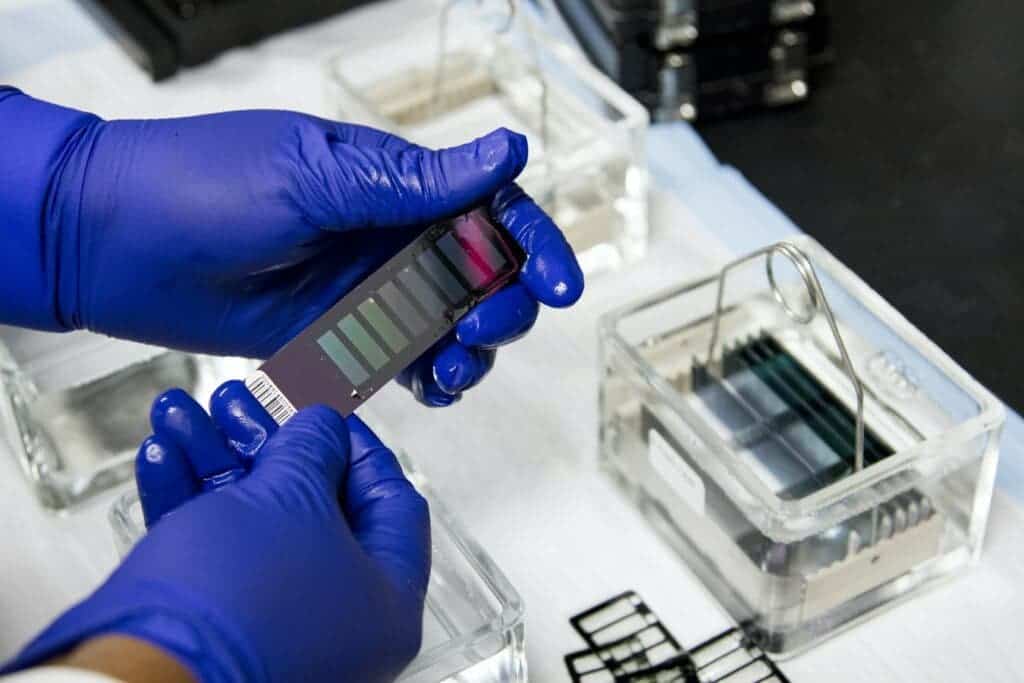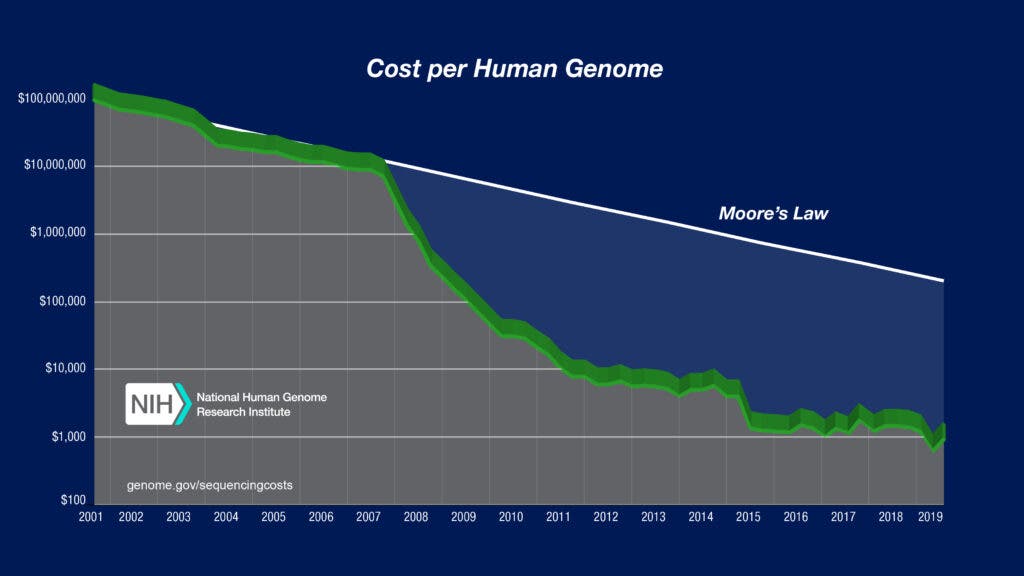If you want to see just how much biotechnology has progressed, you need not look further than COVID-19. It took months to synthesize the original SARS virus, whereas SARS-CoV-2 was synthesized in a couple of weeks.
Since then, researchers have developed reverse transcription polymerase chain reaction (rt-PCR) rests that can diagnose COVID-19 in as little as 15 minutes.
But that’s just scratching the surface of what biotech can already do.
According to a recent report, up to 60% of the physical goods in our world could be produced with biotech innovations, and 45% of the world’s current disease burden could be alleviated using technology that’s already on the horizon.

The $3 billion, 13-year effort to map the human genome that began in 1990 was a groundbreaking project — but it was only a stepping stone to even more ambitious projects.
After this major scientific project, genome sequencing has dramatically dropped in price. Some of that drop is simply owed to computational power, but not all of it.
The cost of DNA sequencing has been decreasing at a rate faster than Moore’s Law, which can only be owed to biotechnological advances.

Better and cheaper
This decrease is owed to biotechnological innovations — and these innovations often feed and reinforce each other. For instance, molecular technologies are improving our capacity to understand and engineer biological processes at the smallest scale. This ability allows us to engineer cells to cure or prevent diseases (such as CRISPR technology). The same process can also be used to manufacture innovative materials (such as meat or bio-textiles) or to facilitate biocomputing and the interaction between biological and computational systems — which is used in a new generation of prosthetics. Ultimately, this could open the door to new, hybrid systems, such as storing information in DNA — which has a storage density about 1 million times higher than that of a hard drive.
All this and much more is discussed in the report published by the McKinsey Global Institute research organization on the future innovations of biotech.
In the next 10-20 years, we will see a biotech enjoying a flourishing revolution, the report states — driven in large part by a drop in costs for multiple biotech tools.
“The direct annual global impact of the Bio Revolution could be $2 trillion to $4 trillion in 2030-40,” the report claims.
From food to medicine
Overall, the report predicts major advancements in the following fields:
- Agriculture, aquaculture, and food.
We’re already seeing the effects of this, from new ways to breed animals and conduct fermentation, to genetic engineering of plants, helping alleviate global hunger. Another area of great interest is developing lab-grown meat: a cruelty-free method to produce real meat, potentially at lower environmental and energy costs than the real thing. Direct annual impact could be between $0.8 trillion and $1.2 trillion.
- Consumer products and services.
This is in part what we are seeing over the course of this pandemic: offering consumers diagnostic and antibody tests can make all the difference. But this is just the start. Applications here also include customized products — tomorrow’s drugs and treatments could be customized based on your biological makeup and microbiome, leading to a potential health revolution — not just in humans, but also in pets.
- Materials, chemicals, and energy.
Biology is increasingly creeping into how we build and process materials and chemicals and could lead to a new generation of materials. Energy is, of course, an important consideration here, and bio-materials could play an important role in our transition to renewables.
- Human health and performance.
From bio-prosthetics to RNA and gene therapy, a range of treatments is on the horizon. Where it will be about improving and extending lifespans, innovations in reproductive medicine, or new avenues for drug development and delivery, biotech will play an increasingly important role in our lives. This is likely where the current pandemic will also come into play, accelerating the impetus in many of these areas.
So while the world is focusing on AI, biotech is flying relatively under the radar, but it is ready to swing into full force in the next few years. But there’s a catch — or rather, a few of them.
Risks, ethics, and public opinion
Despite all these impactful changes knocking at our door, biotech is heavily regulated — much more than AI, for instance. It’s understandable: the technology has tremendous potential, but get it wrong, and there could be disastrous consequences.
Biology is self-replicating and does not respect any boundary. For instance, if you engineer a mosquito to stop transmitting malaria, it can transmit the gene to other mosquitoes in other populations with no regards for borders. But if something goes wrong, the problem is also passed on.
This means that biotech regulation is often an international process, and the consensus is often hard to forge. This process is also dependent on public opinion, and that might become more favorable as the world feels a need to be more prepared to face biohazards such as pandemics.
“Regulation will be important, but so too will oversight and monitoring of science even as it develops. The choices scientists make will help determine what kinds of technologies develop. International collaboration and coordination will be valuable as biology doesn’t respect borders—as we experienced in early 2020 with the rapid spread of COVID-19,” the report concludes.


